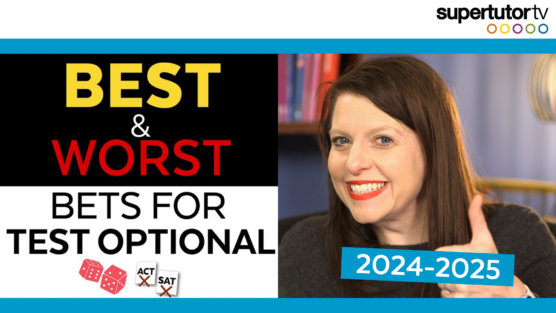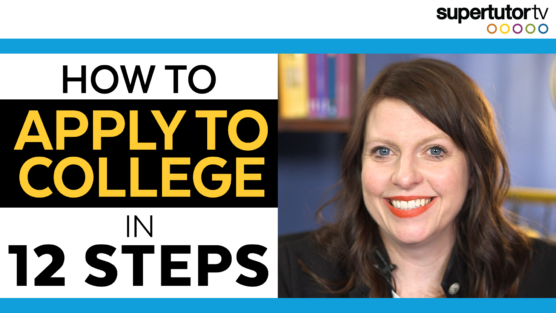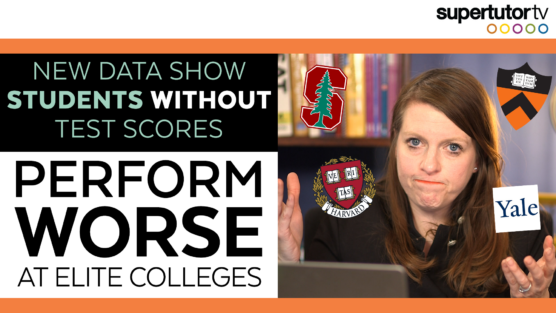Top Universities see 30%+ Drop in Admissions Rates in 2021: Full Data Chart
In 2021, elite colleges and universities rejected more applicants than ever before. Among the 10 most competitive colleges, admissions rates dropped over 34%. Among the most 30 competitive, rates dropped over 30%. And we don’t even have all the data yet– some institutions such as the University of Chicago and Stanford remain hushed about their application and admission rates this year. With the influx of test optional policies, the popularity of gap years, and general uncertainty amidst a pandemic, college admissions have never been so competitive.
We compiled data from University press releases and websites to see just how COVID-19 has impacted top college admission rates.
College Acceptance Rates 2019-2021
| School | 2021 Acceptance Rate | 2020 Acceptance Rate | 2019 Acceptance Rate | 2021 Applicants | 2020 Applicants | Approximate Applicant Increase (2021 vs 2020) | Approximate decrease in admissions chances (2020 to 2021) | Number of Waitlisted Students Admitted 2020 | Number of Waitlisted Students Admitted 2019 |
|---|---|---|---|---|---|---|---|---|---|
| Harvard University | 3.4% | 5.0% | 4.6% | 57,435 | 40,248 | 42.7% | -32% | 34 | 65 |
| Columbia University | 3.7% | 6.3% | 5.3% | 60,551 | 40,083 | 51.1% | -41% | Not Available | Not Available |
| Princeton University | 4% | 5.6% | 5.8% | 37,601 | 32,835 | 14.5% | -29% | Not Available | 1 |
| Massachusetts Institute of Technology | 4% | 7.3% | 6.6% | 33,240 | 20,075 | 65.6% | -45% | 0 | 0 |
| Yale University | 4.6% | 6.5% | 6.1% | 46,905 | 35,220 | 33.2% | -29% | Not Available | Not Available |
| Brown University | 5.4% | 7.7% | 7.1% | 46,568 | 36,793 | 26.6% | -30% | 194 | 127 |
| University of Pennsylvania | 5.7% | 8.6% | 7.7% | 56,333 | 44,205 | 27.4% | -34% | Not Available | 101 |
| Duke University | 5.8% | 7.7% | 7.7% | 49,555 | 39,717 | 24.8% | -25% | Not Available | 334 |
| Dartmouth College | 6.2% | 9.2% | 7.9% | 28,357 | 21,392 | 32.6% | -33% | 95 | 0 |
| Vanderbilt University | 6.7% | 11.6% | 9.1% | 47,174 | 36,646 | 28.7% | -42% | 479 | 453 |
| Northwestern University | 6.8% | 9.3% | 9.1% | 47,633 | 39,263 | 21.3% | -27% | Not Available | 55 |
| Johns Hopkins University | 7.4% | 9.6% | 9.8% | 33,236 | 27,256 | 21.9% | -23% | Not Available | Not Available |
| Swarthmore College | ~7.8% | 9.1% | 8.9% | 13,000 | 11,630 | 11.8% | -14% | 33 | 27 |
| Williams College | 8.0% | 15.1% | 12.6% | 12,500 | 8,745 | 42.9% | -47% | 73 | 25 |
| Colby College | 8.0% | 9.4% | 9.6% | 15,857 | 13,922 | 13.9% | -15% | Not Available | Not Available |
| Cornell University | ~8.5% | 10.7% | 10.9% | 68,500 | 51,500 | 33.0% | -21% | 190 | 147 |
| Rice University | 9.3% | 11.0% | 8.7% | 29,523 | 23,455 | 25.9% | -15% | Not Available | 1 |
| Barnard College | 10.4% | 13.6% | 11.8% | 10,395 | 9,411 | 10.5% | -24% | Not Available | 46 |
| Tufts University | 11.0% | 16.3% | 15.0% | 31,000 | 23,127 | 34.0% | -33% | 222 | 84 |
| University of Southern California | 12.4% | 16.1% | 11.4% | 70,971 | 59,712 | 18.9% | -23% | NA | NA |
| New York University | 12.8% | 21.1% | 16.2% | 100,000 | 80,210 | 24.7% | -39% | Not Available | Not Available |
| Washington University in St. Louis | 13.0% | 16.0% | 13.9% | 33,634 | 27,949 | 20.3% | -19% | Not Available | 189 |
| University of Notre Dame | 14.6% | 19.0% | 15.8% | 23,639 | 21,253 | 11.2% | -23% | 530 | 108 |
| Wellesley College | 16.0% | 20.4% | 21.6% | 7,920 | 6,581 | 20.3% | -22% | 52 | 99 |
| Colgate University | 17.2% | 27.5% | 22.6% | 17,533 | 8,583 | 104.3% | -37% | 97 | 101 |
| Boston University | 18.3% | 20.1% | 18.9% | 75,559 | 61,007 | 23.9% | -9% | 674 | 339 |
| Boston College | 18.9% | 26.4% | 27.2% | 39,875 | 29,382 | 35.7% | -28% | Not Available | Not Available |
| Emory University | 20.4% | 20.8% | 15.6% | 33,780 | 28,517 | 18.5% | -2% | Not Available | 168 |
| University of Virginia | 20.6% | 22.6% | 23.9% | 48,011 | 40,878 | 17.4% | -9% | 165 | 8 |
*Chart does not include data that was unavailable at time of publication from multiple colleges: University of Chicago, Stanford, University of California (all schools), Georgetown, Villanova, Cal Tech, Bowdoin, and Middlebury; our editorial staff believes these might be among the most competitive 30 colleges in the US this year. All data was sourced from the respective websites and/or press releases of each college and university. Some 2019-2020 data may include waitlist admissions. 2021 data does not.
Check out the Best SAT & ACT Course Ever!
But What Explains These Trends?
A big reason for these trends is the increase in the number of applicants– a 28.6% average increase in applications among the top thirty schools and a 34.7% increase in applications at the ten most competitive colleges (according to available data) for admission in 2021. More applicants spells more rejection. What’s more, is that as rates of admission fall, rates of yield (how many students accept offers from colleges) go up, a factor that only compounds the increase in selectivity.
But why so many applicants? The answer is two-fold. First, and most significantly, test blind/test optional policies opened the floodgate to many applicants who otherwise would have avoided applying to these schools, believing they were unqualified. Though few schools are test blind at this point (notably the University of California), most competitive colleges were test optional for the 2020-2021 admissions cycle. Over half of colleges have announced test optional or blind policies for the 2021-2022 admissions cycle. With test optional policies, many students who studied for and took the exams decided after receiving scores to avoid submission. In a survey of over 5,000 SupertutorTV YouTube Subscribers, we found that about 32% of respondents said they took the SAT and submitted it and 15% of students said they took the ACT and submitted their score. Additionally, 15% took the SAT and didn’t submit it, and 5% took the ACT and didn’t submit it. That means around 28% of the students who took an exam didn’t submit their scores. Hence, without test scores, we’re going to see a more competitive college admissions marketplace.
Moreover, there are more students than ever taking gap years. Not only did many admitted students from the class of 2020 postpone their admission, meaning they will be taking up “space” in freshman classes otherwise filled by the class of 2021, but many seniors from 2020 who took a gap year may have reapplied to colleges this year in hopes of attending a more competitive school than the ones they were initially admitted to. Add to that the fact that many colleges had upperclassmen taking gap years who now would like to return to campus. Given these pressures, universities are facing serious issues of on campus capacity as they admit new freshmen and transfer students.
Implications
If you applied for college this past year and you got on a waitlist, you’re probably not getting off of the waitlist. Because of the gap year situation and the potential of too many students on campus, we expect to see a much higher yield for students who were admitted. There may also be larger class sizes than usual. Some schools have already announced plans on how they’ll deal with the increase in students who want in person classes, such as alternative scheduling or increased emphasis on in-person summer sessions.
Current high schoolers may also be impacted. We don’t know what will happen to the test optional/test blind policies yet. More likely than not, a standardized measure that enables colleges to compare students is helpful, and with grade inflation and cheating on the rise thanks to at home learning, such metrics may be more important than ever. At the same time, colleges are going to monitor how this experimental freshman class performs. They’ll take note of students who were admitted without a test and see how they handle freshman year. We don’t know the answer to these questions yet.
Standardized Tests
Will colleges return to standardized tests as an important admissions factor? We’ll have to wait to see for sure. But when no standardized tests are available, students lose an important access point. Though many complain that test scores correlate with wealth (they do), factors used in college admissions besides tests correlate even more so and often are completely inaccessible to students without means. Expensive activities, admissions essays, counselor recommendations and phone calls to admissions officers, and legacy status all weigh heavily in the admissions process and often disadvantage students without means. Test aren’t perfect, but they are accessible: over a million students across the country at high schools everywhere can take them, anyone can study for free online on Khan Academy, Reddit, or YouTube, and colleges often take test results in context, meaning if you are low-income, your scores will travel farther. With test blind policies, we may find even more clamoring for access through channels that favor the privileged. It’s easy to hate on standardized tests, but what better choices are out there?
Have comments or questions? Leave them on our YouTube video!




